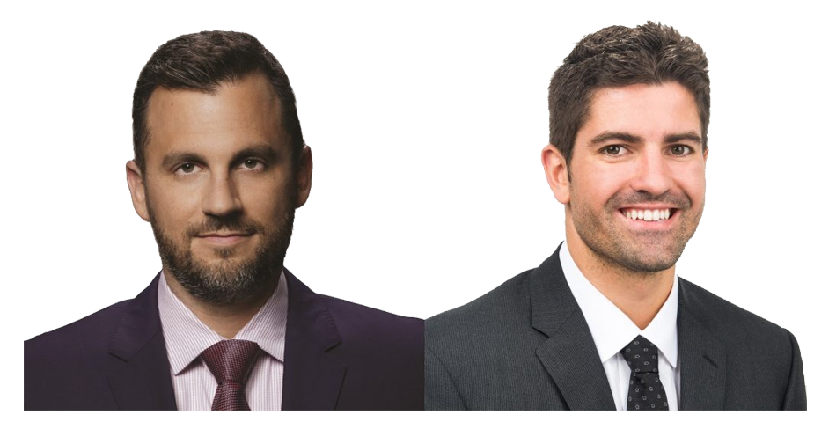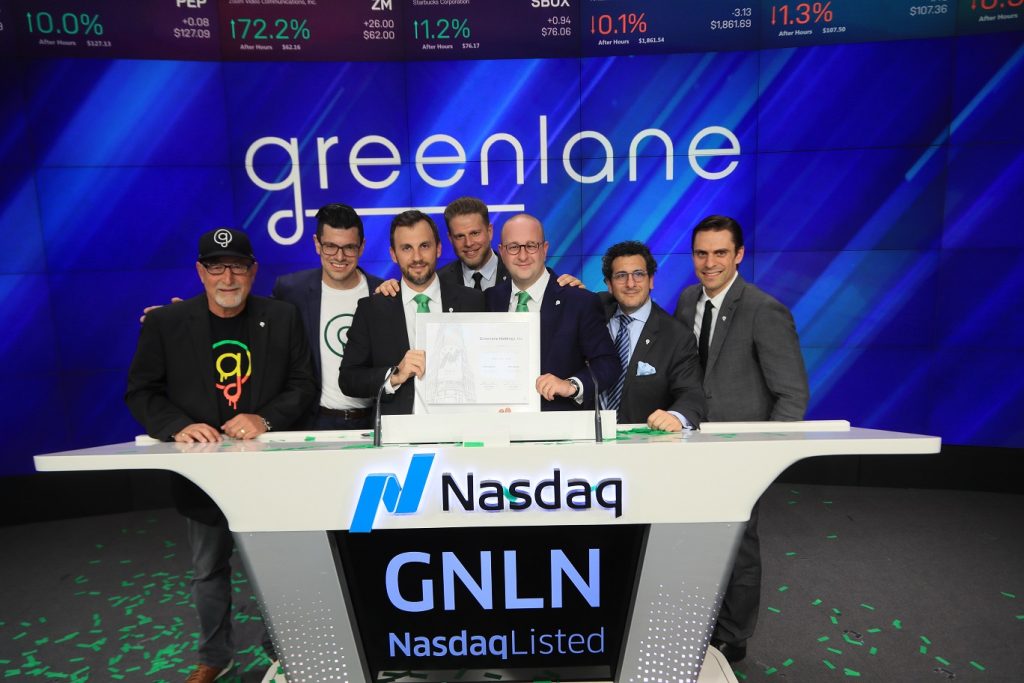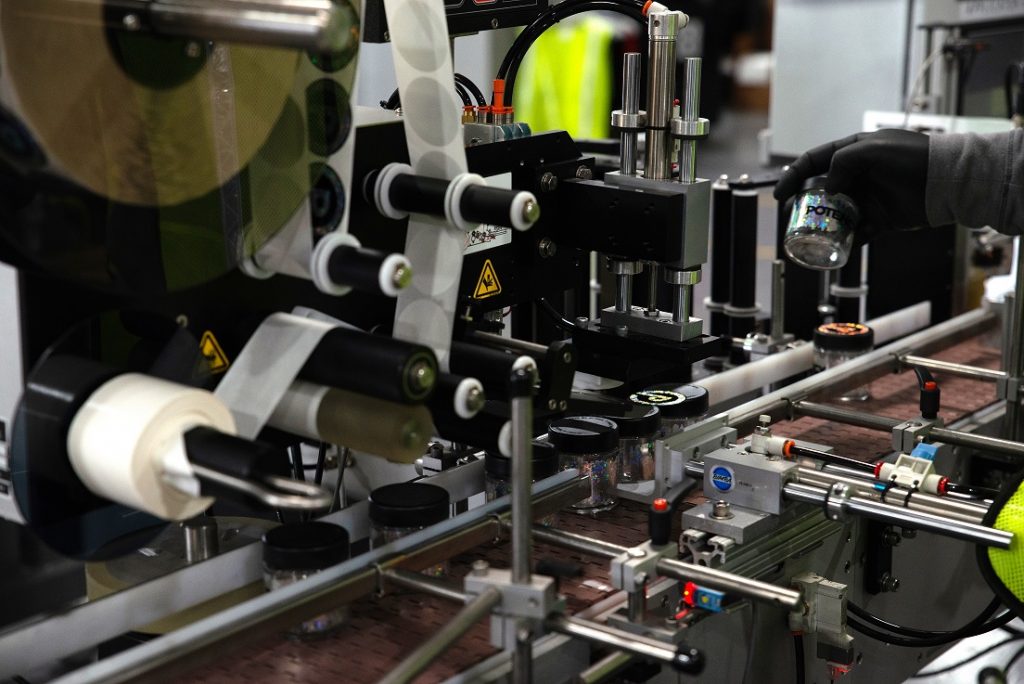
Exclusive Interview with Founder and CEO of Greenlane Aaron LoCascio and Co-founder, Chairman and CEO of KushCo Holdings Nick Kovacevich
KushCo Holdings (OTCQX: KSHB) and Greenlane (NASDAQ: GNLN) are set to merge, creating a leading player in the cannabis ancillary space. KushCo sells its products, including packaging, supplies and butane, propane and ethanol through its energy division, to some of the largest MSOs, LPs and brands in the industry. Greenlane’s portfolio of products, including consumption devices and owned brands, is largely sold downstream to retailers and direct-to-consumer. Once combined, the company will have an expansive offering that reaches both upstream and downstream in the industry, with opportunities to cross-sell and leverage its new, larger scale.
Aaron LoCascio, the Founder and CEO of Greenlane, and Nick Kovacevich, the and Co-founder, Chairman and CEO, of KushCo spoke with New Cannabis Ventures about the timeline of the merger, plans for integration and how the pro forma company will continue to grow. The audio of the entire conversation is available at the end of this written summary.
The Leadership of the Combined Company
Greenlane and KushCo have already announced the team that will lead the pro forma company. Kovacevich will serve as CEO, leading a team of people with entrepreneurial drive and experience in high-growth CPG companies. LoCascio will be President.
Other important members of the team include Adam Schoenfeld as Chief Strategy Officer, Bill Bine as Chief Operating Officer, Bill Mote as Chief Financial Officer, Rhiana Barr as Chief People Officer, Michael Cellucci as President of CPG Sales, Andrew Goodman as SVP of Packaging and Douglas Fischer as General Counsel.
The team is focused on the integration process and preparing to hit the ground running once the merger officially closes.
Laying the Groundwork for Integration
KushCo and Greenlane have cleared the HSR waiting period, a key step forward in the regulatory process. The team expects the merger to close sometime in the mid-calendar year. The functional leaders of the two companies are hard at work planning for integration, and the team has brought in outside consultants to help with the process. The company will be set to realize $15 to $20 million in cost-saving synergies within 24 months of the deal closing, according to Kovacevich.
Footprint and Customer Base
Both KushCo and Greenlane sell their products in the U.S. and Canadian markets, and those markets will remain a key focus for the pro forma company. Through an acquisition, Greenlane also has a position in the emerging European market. Kovacevich expects the pro forma company to be able to drive meaningful revenue and profit in the European market ahead of full legalization.
KushCo serves major MSOs and LPs in the cannabis space. Greenlane’s access to direct-to-consumer channels is part of what makes the merger attractive. In the past, Greenlane has largely been a seller of third-party products, but now, it is focusing on vertical ancillary distribution with a comprehensive portfolio of owned brands.
As the company prepares to merge, the team has spent a significant amount of time envisioning the future product portfolio. The company will be trimming the fringe of its catalog, selling overall fewer SKUs, according to Kovacevich. But, the company is also building a robust innovation pipeline, planning to bring in-demand products and brands to its customers.
M&A Pipeline
The Greenlane and KushCo merger has yet to close, but this deal is likely just the start for the pro forma company’s M&A strategy. Greenlane has been public about its intention to continue growing through both organic and inorganic strategies, according to LoCascio. He describes the Greenlane and KushCo merger as horizontal, broadening the base of potential points of distribution and customers. Going forward, the company will be excited to explore vertical opportunities, building on its house of brands and looking to potentially acquire its third-party distribution partners.
The company has a robust pipeline of additional M&A it plans to execute in the near and mid-term, according to LoCascio. With a NASDAQ listing, the pro forma company will have the access to capital and a distribution network to appeal to potential acquisitions. Kovacevich sees the pro forma company as a unique platform with the ability to roll up and integrate ancillary CPG companies.
Balance Sheet Outlook
Over the last year, KushCo has spent time shoring up its balance sheet. The company raised $40 million in equity in February, allowing it to pay off $17 million in debt. Now, the company has no long-term debt outside of its working credit facility with Monroe Capital, according to Kovacevich.
In 2019, Greenlane raised $100 million with its IPO. Today, it has a strong balance sheet with little debt outside of the mortgage on a building it owns.

Once federal legalization comes to pass, investor demand will increase, and public company access to capital will be much more accretive, according to Kovacevich.
Right now, the team is planning its working capital dynamics. The company is transitioning to a house of brands model, which will come with higher margins. And, Greenlane’s direct-to-consumer business comes with cash up-front.
Kovacevich sees the working capital dynamics improving and expects the NASDAQ-listed company to have access to capital at accretive terms. He sees KushCo and Greenlane’s equity as undervalued right now, a consideration as the team plans its fundraising strategy. While debt is a non-dilutive option, the company is not planning to over-leverage that strategy. The pro forma company will be working with its vendors to find better working capital terms and improving the efficiency of its operational processes.
Pro Forma Revenue
The combined company is expected to generate $310 million to $330 million in pro forma revenue for 2021. On the KushCo side, the company works with major MSOs, which are quickly growing. The company is building resources to support its customers, which will help it to ride that growth wave, according to Kovacevich. Twenty-five of the company’s customers made up nearly 80 percent of the company’s nearly $33 million in sales for the quarter. The company plans to continue creating those deep, sticky relationships with its major customers, cross-selling and creating barriers to competition.

On the Greenlane side, the company is continuing to build out its ancillary cannabis products with a particular focus on its own high-margin brands, according to LoCascio. The company recently reported a sequential improvement, total sales of owned brands increasing from 20 percent to 25 percent.
The Future of the Company
As a large, NASDAQ-listed company, the combination of KushCo and Greenlane will have the scale and experience to navigate the industry’s challenging regulatory environment. The company’s position makes it an attractive option for smaller ancillary companies looking to be acquired. In addition to inorganic growth, the company plans to leverage tremendous amounts of cross-selling and upselling, according to LoCascio.
The story the pro forma company is telling could be of significant interest to institutional investors that cannot buy U.S. cannabis stocks traded on the CSE and OTC. The pro forma company offers these investors a path to play in the global, legal cannabis space, according to Kovacevich.
New Cannabis Ventures provides a sponsored Investor Dashboard for KushCo. Listen to the entire interview:
